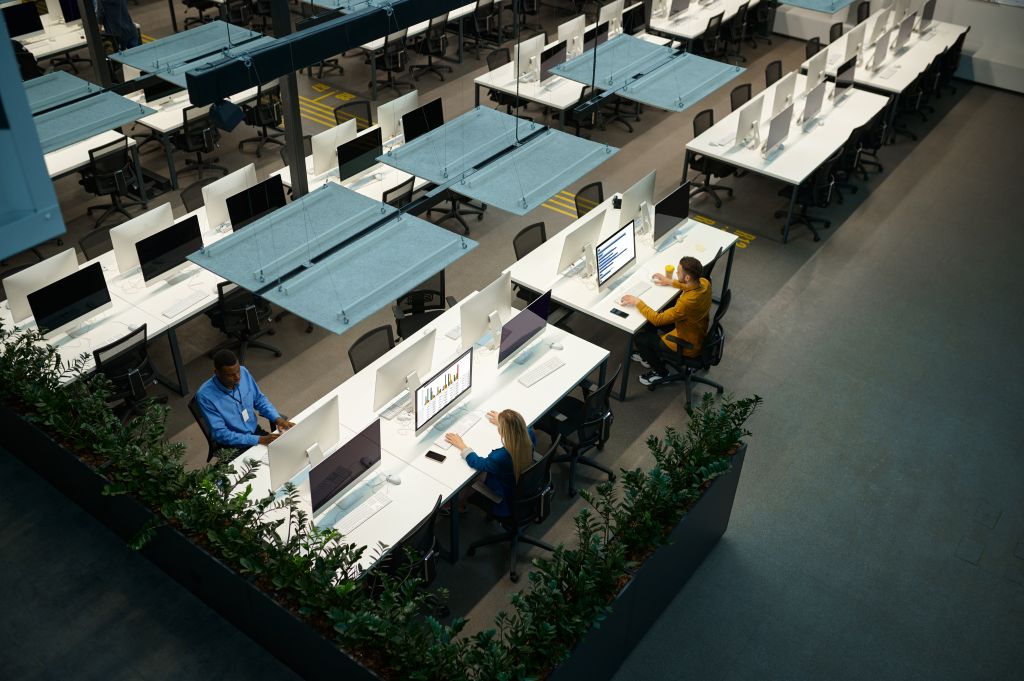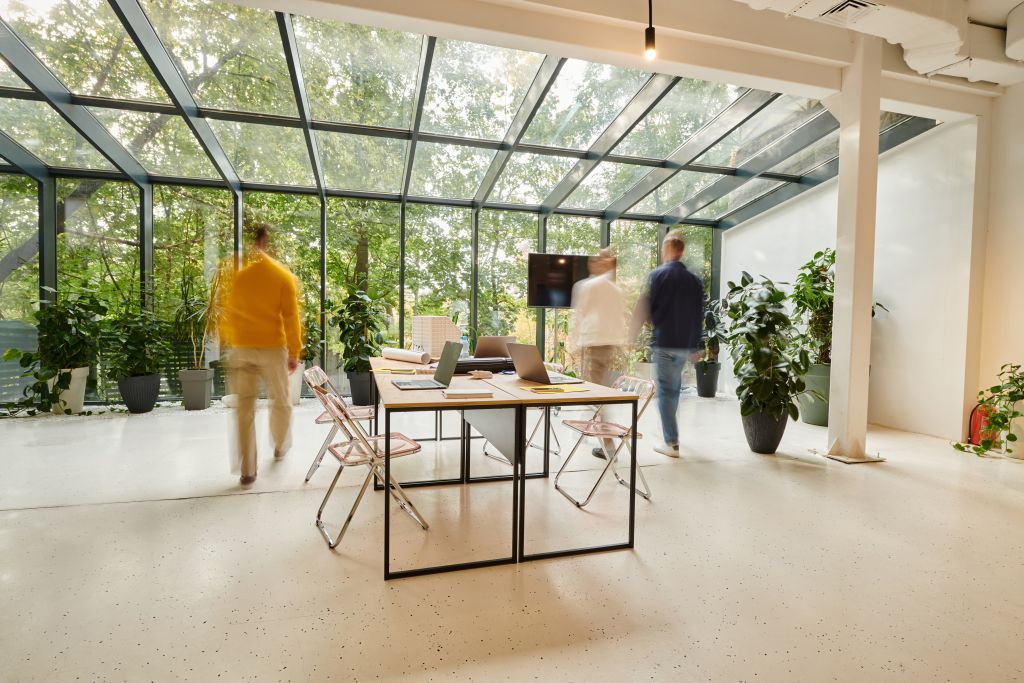Heating or cooling empty spaces, even with efficient systems, is no longer acceptable. Energy per person must become the new standard for sustainable, intelligent buildings.
The traditional energy-per-square-meter metric no longer reflects how buildings are used—especially in a world of hybrid working. With people counting technology, energy per person is emerging as the smarter metric, enabling real-time HVAC control and dynamic space management. This article explores how policy and practice must evolve to match.
The Problem with Energy per Square Meter
The traditional metric for evaluating building energy use—kilowatt-hours per square meter—no longer makes sense in an age of high-efficiency systems and fluctuating occupancy.

It assumes uniform, continuous use of space, when in reality, buildings today are far more dynamic. A modern building may be equipped with state-of-the-art systems, but if it runs HVAC at full load while largely empty, it’s still an energy waster.
Energy-per-Person: A Smarter Metric
Measuring energy-per-person aligns building performance with actual human activity. It allows energy usage to be tied directly to occupancy, creating new opportunities for energy savings that go far beyond the limits of space-based metrics.

This approach opens up smarter, occupancy-based controls that automatically reduce consumption in underutilized areas.
From Space Optimization to Energy Efficiency
People counting technologies have traditionally been deployed to optimize room bookings, space planning, and cleaning schedules. Now, the conversation is evolving: these systems are becoming key enablers of real-time energy efficiency.
Integrated with Building Management Systems via standard protocols like BACnet, people counting data can guide dynamic adjustments to HVAC, lighting, and ventilation systems—automatically aligning energy use with real-time demand.
Hybrid Working & Dynamic Space Management
The rise of hybrid working has added new complexity to building operations. Occupancy is now unpredictable: large spaces such as meeting rooms, communal areas, and restrooms may remain mostly unused for much of the day. Despite this, they are often still heated/cooled, ventilated, and lit as if at full capacity.
This is where people counting plays a transformative role. By continuously monitoring occupancy, systems can make smart decisions—closing off underused zones, consolidating usage, and adjusting environmental controls accordingly. Dynamic space management ensures that energy is only consumed where and when it’s truly needed, while also improving user experience and operational efficiency.
Policy Will Follow Technology
As policymakers look for more accurate and equitable ways to measure and regulate energy use, energy-per-person is the natural next step. Reporting based on square meters doesn’t capture building usage patterns or occupancy trends—especially under flexible work arrangements.
Future standards must include occupancy-aware metrics to truly support sustainability targets and net-zero strategies. It’s not just about how efficient the systems are—it’s about how intelligently they’re used.
The Road Ahead
Occupancy-based control is not a futuristic idea—it’s available today, scalable, and already proving its value. Forward-thinking building operators are turning to people-aware automation to meet both environmental goals and financial targets.
Empowering Smarter Buildings with Terabee
Rethinking how we measure and manage energy in buildings is no longer optional—it’s essential. By adopting energy-per-person metrics, we can design environments that adapt to us in real time, cutting waste and improving comfort.

Leading this transformation is Terabee, whose accurate, GDPR-compliant people counting solutions integrate easily into existing Building Management Systems. With support for BACnet and other modern protocols such as MQTT and LoRa, Terabee sensors enable real-time, occupancy-driven control—from HVAC and lighting to dynamic space usage.
By embracing people-aware technologies like those offered by Terabee, we can make buildings not just greener, but smarter, leaner, and more human-centric.
The Author: Dr. Max Ruffo is a visionary technology leader with over two decades of experience at the forefront of industrial innovation, having pioneered the introduction of 3D printing, civil drones, autonomous mobile robots and LiDAR sensors. Today, Max is dedicated to a long-term mission of building a better world by championing green buildings and net-zero communities.
